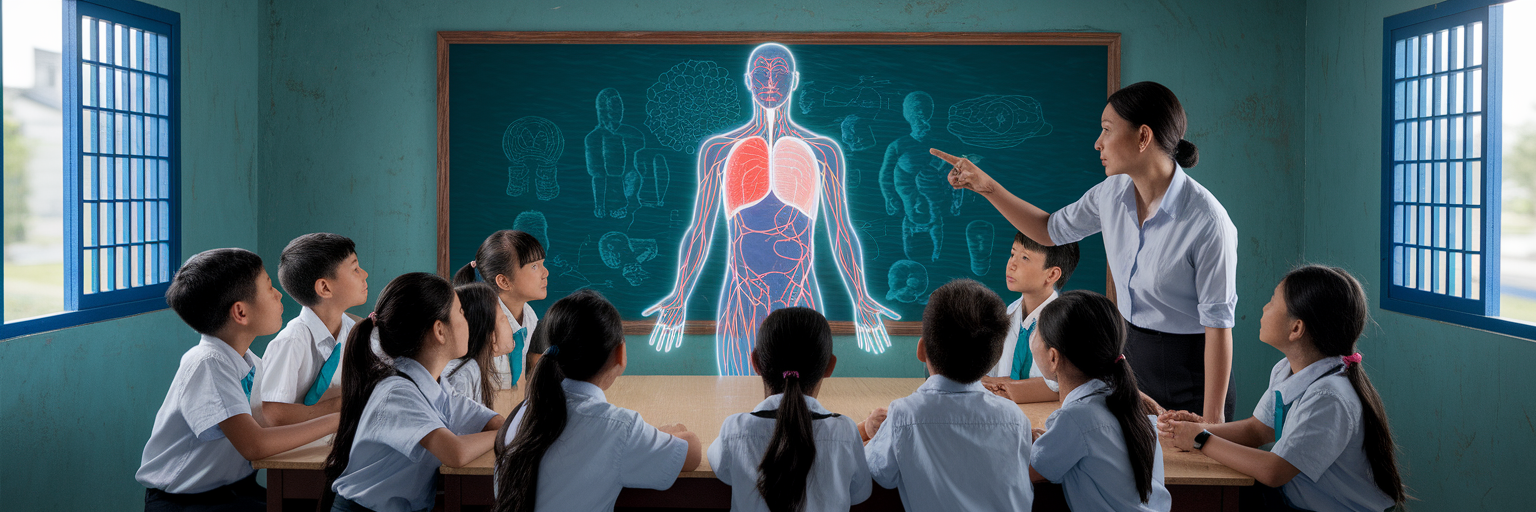The New Digital Classroom in 2025
The global market for AI in education reached $7.57 billion this year, a figure that confirms artificial intelligence is no longer a futuristic concept but a present-day reality in our schools. This technology is actively reshaping the learning experience for students and teachers alike, moving beyond simple software to become an integral part of the educational process. This article explores five specific, impactful ways AI is transforming classrooms right now. We will look at how it creates personalized learning journeys, provides instant support, and frees up educators to focus on what matters most. While the opportunities for enhanced learning are significant, this transformation also demands a mindful and ethical approach to its implementation. The goal is to understand both the potential and the responsibilities that come with integrating these powerful tools into our educational systems.
1. Tailored Learning Paths for Every Student
We all remember classrooms where some students raced ahead while others struggled to keep up. AI directly addresses this by enabling truly personalized learning with AI. Instead of a one-size-fits-all curriculum, AI-powered platforms analyze a student's performance in real time. They identify strengths, pinpoint areas of difficulty, and adjust the learning pace accordingly. For example, a student who quickly masters algebraic equations might be introduced to more complex problems, while a classmate who is struggling receives additional exercises and explanatory videos to reinforce the core concepts. This dynamic adjustment helps students achieve mastery at their own speed, which reduces the frustration of feeling left behind or the boredom of waiting for others. Studies show this level of personalization can lead to improved outcomes. As highlighted in a report from Engageli, it can improve student outcomes by up to 30% compared to traditional methods. These custom journeys are just one of the many benefits of AI in education, making learning a more engaging and effective experience for every individual. This is one of the most promising education technology trends today.
2. Instant Feedback and Mastery Support

The traditional cycle of submitting an assignment and waiting days for a grade is becoming a thing of the past. The power of artificial intelligence for students lies in its ability to provide an immediate feedback loop, which is critical for effective learning. When feedback is instant, students can correct misconceptions before they become ingrained habits. This is a stark contrast to finding out about a mistake a week later, long after the lesson has moved on. AI-powered virtual tutors and automated assessment tools make this possible across various subjects.
Consider these practical examples:
- AI writing assistants that not only flag grammatical errors but also explain the underlying rules, helping students understand the 'why' behind the correction.
- Interactive coding platforms that identify bugs in a student's code and suggest potential fixes in real time, turning frustration into a learning moment.
- Virtual science labs that guide students through experiments, pointing out procedural mistakes as they happen and ensuring they grasp the scientific method correctly.
This approach supports a mastery-based learning model. Instead of just receiving a static grade, students can iterate, refine their work, and improve until they fully understand a concept. It shifts the focus from performance to genuine comprehension.
3. Empowering Teachers with AI Assistants
A common fear is that AI will replace teachers, but the reality is far more collaborative. The most effective AI tools for teachers act as powerful assistants, automating the repetitive administrative tasks that consume so much of an educator's valuable time. Think about the hours spent grading multiple-choice tests, managing student records, or creating initial drafts for lesson plans. AI can handle many of these duties, freeing up teachers to focus on the human elements of their job that technology cannot replicate. A recent Cengage Group update revealed that nearly six in ten teachers are using AI, saving almost six hours per week. What do they do with that reclaimed time? They invest it back into their students through one-on-one mentoring, facilitating complex classroom discussions, and providing the personalized emotional and academic support that truly makes a difference. A wide array of top free AI tools are now available to help educators streamline these processes, ultimately augmenting their ability to teach effectively.
4. Expanding Access to Quality Education

Beyond individual classrooms, AI is playing a crucial role in making quality education more accessible to all. It helps overcome geographical, physical, and financial barriers that have historically limited learning opportunities for many. For instance, AI-driven real-time translation tools can create inclusive, multilingual classrooms where language is no longer a barrier to understanding. For students with learning disabilities, text-to-speech applications and other adaptive technologies can make course materials accessible and manageable. Furthermore, virtual labs powered by AI give students in under-resourced schools the chance to conduct advanced experiments that would otherwise be impossible due to equipment costs. This trend is part of a larger story about the evolution and impact of educational technology over the decades. We are seeing this play out on a global scale, with regions like Asia-Pacific experiencing rapid growth in educational technology as they seek innovative ways to serve large and diverse student populations. AI is not just improving existing systems; it is opening doors to education for those who were previously left out.
5. Fostering Creativity and Higher-Order Thinking
Does using AI make students less creative or thoughtful? The opposite is often true. When used correctly, AI becomes a collaborative partner that enhances human ingenuity rather than stifling it. Students can use generative AI to brainstorm ideas for an essay, explore different perspectives on a historical event, or create visual aids for a presentation. In STEM fields, they can generate foundational code for a project, allowing them to focus on the more complex logic and design. The key is that using these tools effectively demands higher-order thinking skills. Students must learn to craft precise prompts, critically evaluate the AI's output for accuracy and bias, and synthesize that information into their own original work. This shifts the focus of education away from rote memorization and toward the skills that matter most: problem-solving, ethical evaluation, and creative synthesis. Students can even use these tools to develop AI project ideas for beginners, turning theory into practice.
Navigating the Challenges and Ethical Questions

Integrating AI into education is not without its challenges. A balanced approach requires us to acknowledge and address the practical and ethical hurdles. For these tools to be truly beneficial, we must be proactive in mitigating risks related to data privacy, algorithmic bias, and the digital divide. The goal is to ensure that AI serves all students equitably and responsibly. A significant part of this is closing the 'AI literacy gap' by teaching both students and educators how these tools function, what their limitations are, and how to use them ethically. A responsible deployment of AI in education requires careful planning and continuous oversight.
| Challenge | Potential Impact | Mitigation Strategy |
|---|---|---|
| Data Privacy & Security | Unauthorized access to or misuse of sensitive student performance and personal data. | Implement strong data encryption, transparent privacy policies, and give users control over their data. |
| Algorithmic Bias | AI models trained on biased data may perpetuate or amplify existing inequities against certain student groups. | Regularly audit algorithms for bias, use diverse training data, and maintain human oversight in high-stakes decisions. |
| Over-Dependence | Students may fail to develop fundamental critical thinking and problem-solving skills by relying on AI for answers. | Teach AI literacy, focusing on using AI as a tool for inquiry and verification, not a source of truth. Design assignments that require synthesis and original thought. |
| Digital Divide | Unequal access to AI tools and high-speed internet can widen the achievement gap between well-resourced and under-resourced students. | Invest in public infrastructure, provide schools with subsidized tools, and prioritize open-source and accessible AI platforms. |
This table outlines key ethical considerations for implementing AI in educational settings. These mitigation strategies are based on recommendations from educational technologists and policymakers to ensure responsible deployment.
The Path Forward for AI in the Classroom
Artificial intelligence is a powerful force for personalizing learning, empowering teachers, and expanding access to education. The central message remains clear: the goal is to augment human teachers, not replace them. The path forward requires continued investment in teacher training and the development of clear institutional guidelines for ethical AI use. Initiatives like the National Academy for AI Instruction show that these efforts are already underway, providing a sense of concrete progress. By embracing AI thoughtfully, we can create a more effective, equitable, and engaging educational experience for generations to come.




0 Comments